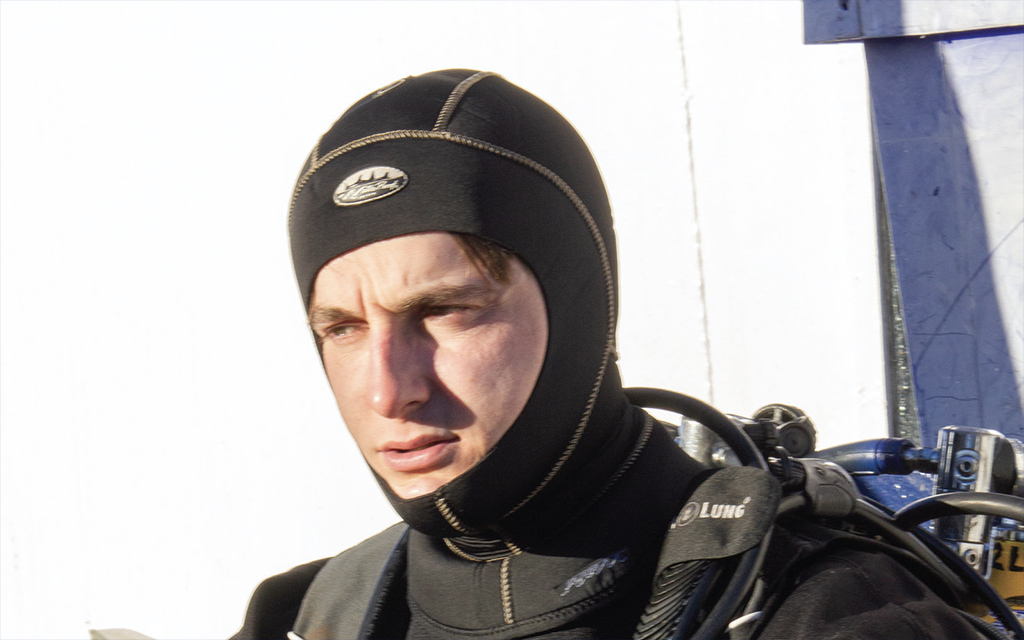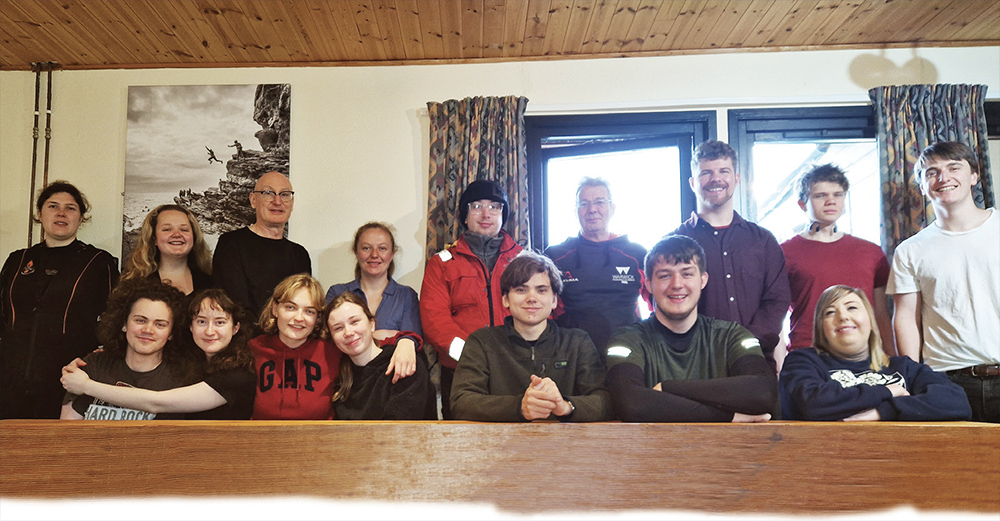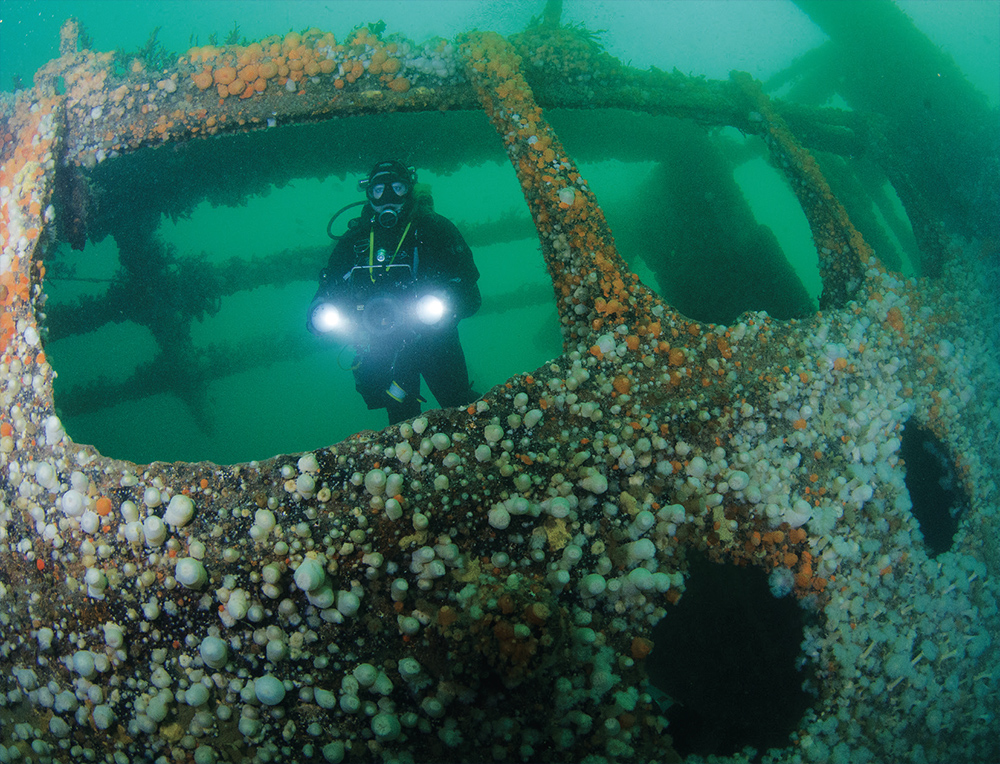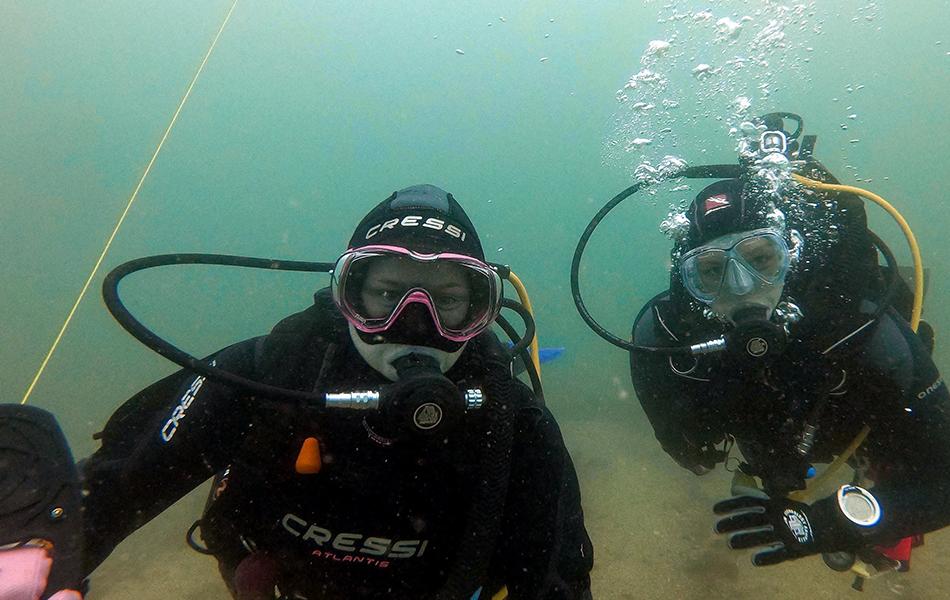
Meet Peter Shone, an Advanced Diver and Assistant Advanced Instructor with Solway SAC. Interview by Kristina Pedder.
Peter Shone from Whitehaven, Cumbria, is a geotechnical engineer by day and an enthusiastic dive trip organiser and instructor in his spare time. He’s a member of his local club, Solway SAC, and three university branches: Liverpool, Manchester and Warwick.
When I ask if he discovered diving at university, Peter says no. His father was a keen diver who started as part of his Duke of Edinburgh Award and then joined Leeds Sub Aqua Club when he went to university there. Peter’s dad stopped diving when starting a family. Then, when Peter was 14, his father suggested he learned to dive before a family holiday to Malta.

Peter was signed up at the local PADI centre and says he tore through the theory and pool lessons with great enthusiasm. They stuck him in a little clay pit in a wetsuit in December. It was 4°C in the water and the visibility was awful, but he says he had the most amazing time.
“In Malta, on my first sea dive, I saw beautiful fish, and, incredibly, seahorses. Then, I dived the P29 patrol boat, saw the turret and instantly fell in love with wreck diving. I’ve never looked back.
FACT FILE
Name: Peter Shone
Job titles: Instructor, mentor and trip organiser for university clubs
Area covered: North West England
“From then, I dived fairly regularly with dad,” he says, “but he always told me that Uni diving would be the best diving I would ever do, and the cheapest. Portsmouth University club definitely delivered on that.”
Peter began to volunteer at university clubs. He was always critical of ticket chasers, but he realised that as a very experienced Sports Diver, he couldn’t help out nearly as much as an instructor could. “I then worked very hard to get to OWI,” he says. “And before I knew it, I was teaching all year round.”
FAVOURITE KIT
My Dark Space Explorers diving wrist mirror. Initially I was sceptical, but having a mirror on the back of your hand makes it so easy to be aware of where people are. It’s also useful in wreck diving, as you can see how close you are to an overhead obstruction. You don’t need to worry about it being fragile, I reckon I could run it over and it would be okay.
He admits that while he loves teaching, it is even more rewarding to help new instructors. “The transformation of a shy and unsure instructor into an independent and experienced role model and teacher is beautiful,” he says. “Instructing and running dive trips has massively expanded my management skills and transformed my work life, and it feels amazing to pass that on.”
I wanted to know what got Peter hooked on diving. “I love the environment that diving puts you in,” he told me, “Surrounded by a great group of people, exploring new depths and pushing yourself. Immersing myself in history or in our beautiful marine environments and sharing that with new people every time.”
Peter is a passionate advocate of Just Going Diving. He realised that most uni club diving was at local inland sites; leading to high costs, frustrated, overworked instructors, and trainees with a very narrow view of UK diving. Then he joined a trip to Anglesey organised by Jack Harvey from Coventry BSAC. “I saw the low cost of the trip, the great fun that was had, and decided to scale it up,” he says. “I began running regular trips all over the UK to give students ultra-cheap access to shore diving and great social opportunities.”
SKILLS TIP
Dive what’s on your doorstep. If you can hop in a lake after work, or nip off to the sea for a dive, do it. Super cheap, super regular diving will bring you joy, build a culture among your friends of good diving, and make you a better diver.

I ask about favourite dives. Peter says: “When students ask, I always cheat, and say the following…“For monster-sized commercial wrecks, it doesn’t get better than the Sound of Mull. Huge amounts of history and big ships. Best done from MV Honeydew. Sarah and Rohan provide a level of customer service and care that simply can’t be beaten.“For naval wrecks, Scapa Flow is my favourite, although I haven’t been to Chuuk yet. There’s something special about touring the length of a First World War German cruiser or staring down the barrel of a 10-inch battleship gun.“For marine life, the best I have seen is Komodo [an island in Indonesia’s Nusu Tengarra archipelago, known for its endemic ‘dragons’], flying over dense reefs full of life as the current gets faster and faster.”
Peter used to log dives in great detail, but says he got lazy when he first started training loads of students. With around 750 dives done, he recently started logging again: “Partly for me and partly because I always encourage students to do this. Too often they are hampered by issues relating to kit configuration and weighting, but they take 10 times longer to put these issues behind them if they don’t write down all the boring stuff about their dives,” he says. So, Peter’s advice is to log weight, log kit (especially your undersuit), log air in/out. A little bit of data collection will make future diving so much easier. You’ll quickly learn to use your logbook to inform your kit setup.
Article ‘’Just. Go. Diving!' by Kristina Pedder first published in SCUBA magazine, Issue 157 July/August 2025.




